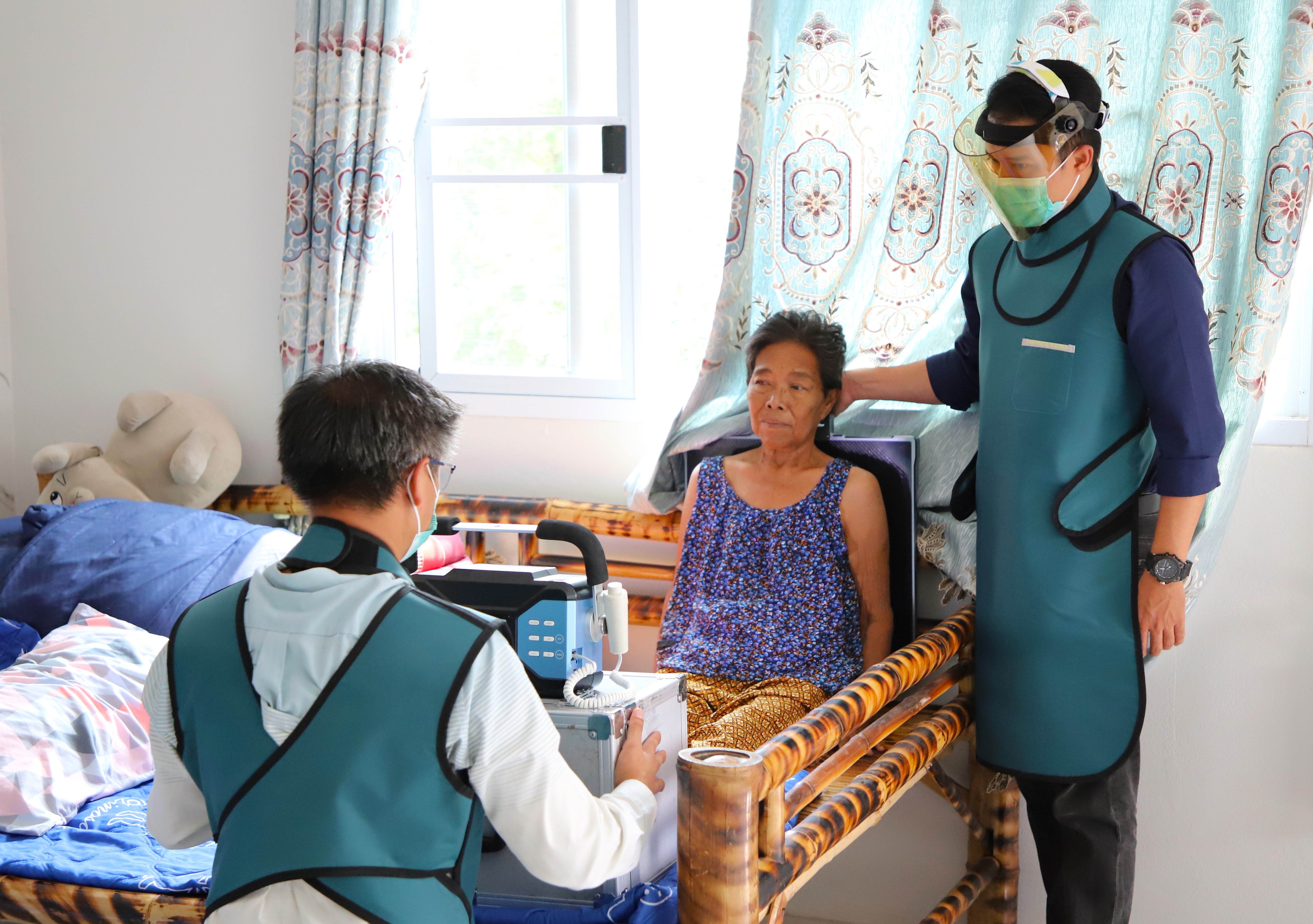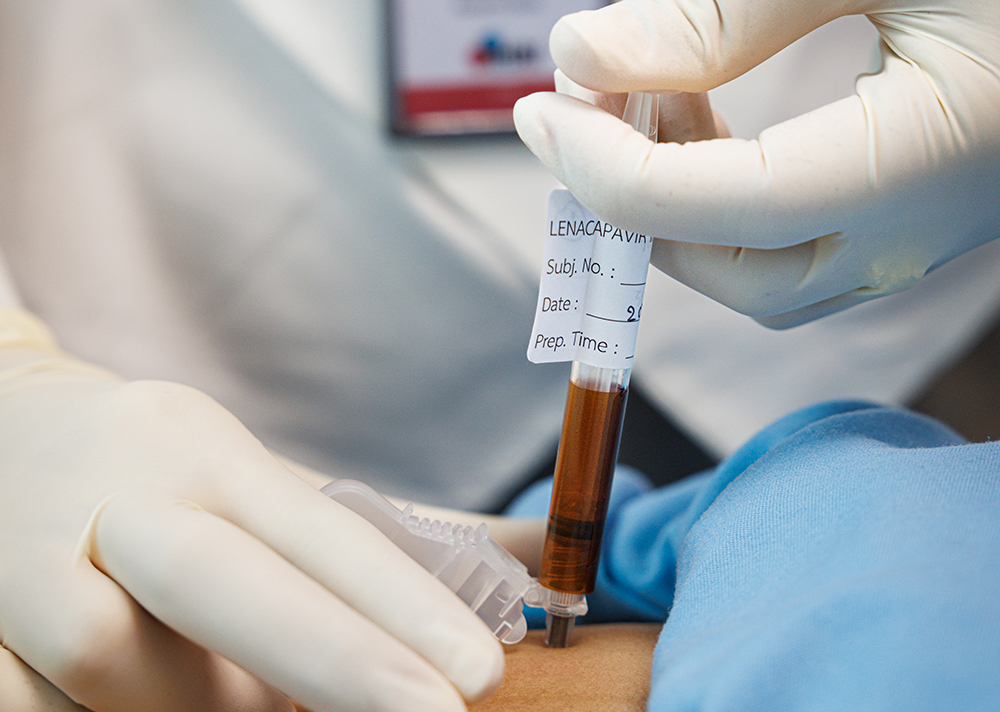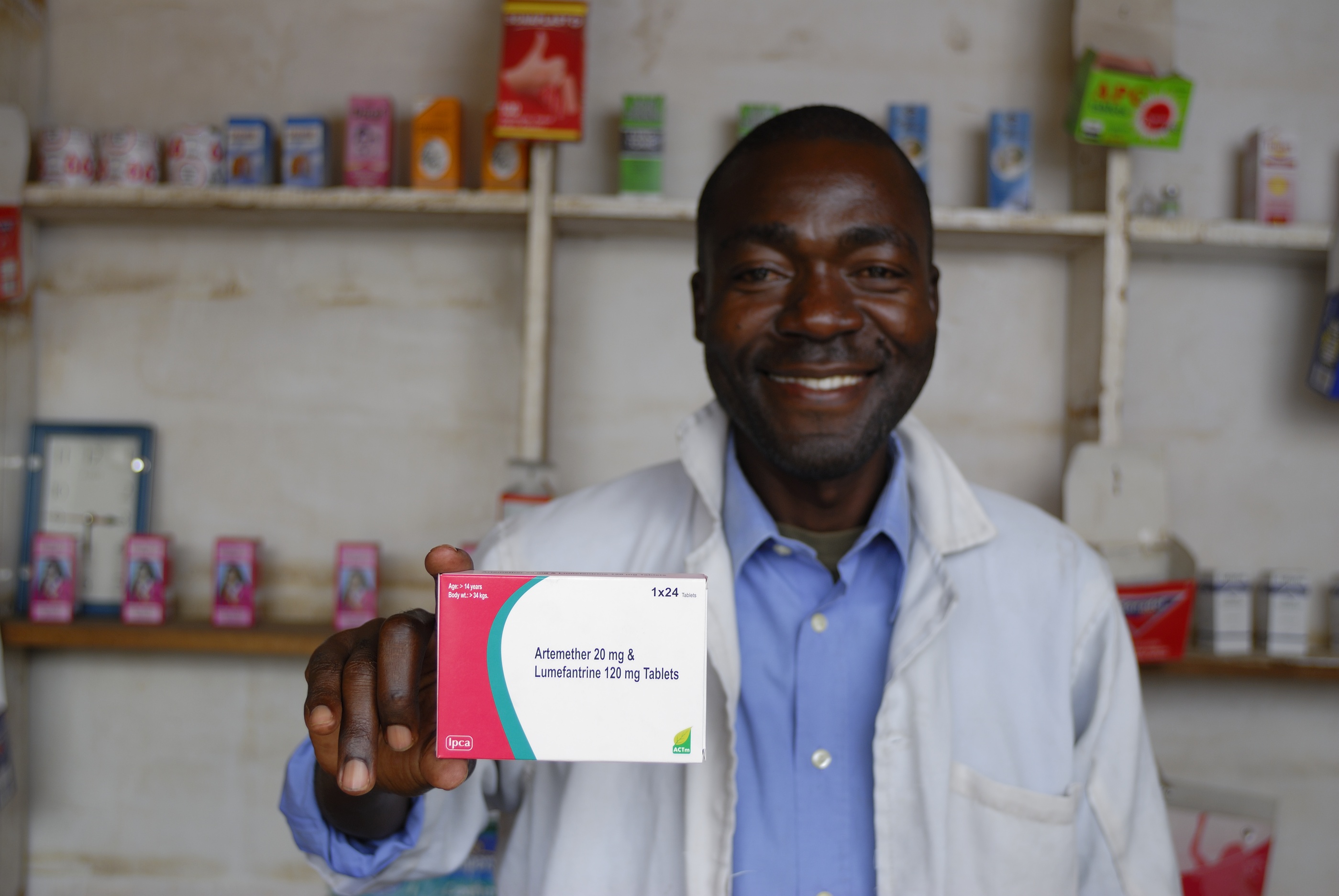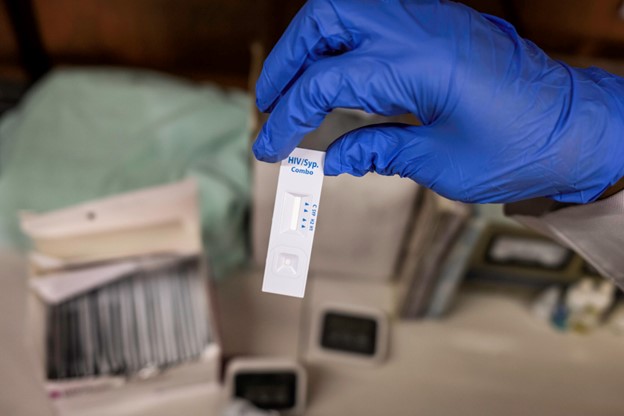This article was originally published as part of Unitaid’s report “Reimagining global health: advancing people-centered solutions.”
Innovation is at the center of our work. Sometimes this means identifying novel tests, medicines, or devices that need proof-of-concept to help encourage uptake. Other times, the innovation is in the delivery – developing optimal, cost-effective ways to ensure new or underused tools reach further for that greatest benefit.
Here are five promising new health innovations we’re supporting.

Up to half of all women who experience severe bleeding after childbirth, known as postpartum hemorrhage, are identified too late or not at all, causing life-threatening delays in treatment access.
A piece of plastic sheet that hangs off the end of the delivery table and collects and measures blood in a clear pouch at its base, the calibrated drape is a simple solution to a deadly access barrier. The device enables healthcare workers to quickly and objectively identify postpartum hemorrhage and intervene with critical, lifesaving treatment.

Weighing just 5kg and designed for use in the most remote settings, ultraportable digital chest X-rays are an essential tool for identifying TB early. Compatible with AI-driven computer aided detection software that interprets X-rays and performs on par with expert human radiologists, this combination of tools allows for early TB screening and triage outside of traditional health facilities.
A landmark pricing agreement, secured by Unitaid and CHAI with South Korean manufacturer Poskom, dramatically reduced the price of their portable X-ray device. This agreement will help bring cutting-edge TB screening closer to people’s homes and communities in 138 low- and middle-income countries, including those with the highest burdens of TB.

A revolutionary long-acting HIV prevention option, lenacapavir, demonstrated 100% efficacy in preventing new HIV infections among cisgender women and adolescent girls, and a 96% reduction in HIV infections among cisgender men and gender diverse people – with just two injections a year. This latest innovation in preexposure prophylaxis, or PrEP, expands on a growing set of options, with once-daily oral tablets, the bi-monthly injectable cabotegravir and a monthly vaginal ring.
Continuous innovations in PrEP are critical to introduce solutions that better meet the needs of people at risk of HIV infection to increase uptake. Injectable PrEP, which is more discreet and doesn’t require daily pills, may help vulnerable or marginalized populations access HIV prevention.

Within a population, the use of two or more artemisinin-based combination therapies (ACTs) – the recommended treatment for malaria and a key driver of progress against the disease in recent decades – can help minimize the risk of drug resistance. Today, most malaria cases in Africa are treated with just one ACT. But heavy reliance on this single medicine is contributing to declining effectiveness.
Expanding the use of other equally effective ACTs – such as through multiple first-line therapy approaches – can reduce pressure, protect treatment efficacy, and safeguard progress. With greater support to lower costs and boost use of alternative ACTs, countries can take a more sustainable and resilient approach to malaria treatment.

Capable of quickly detecting two or three conditions at once, dual and triple rapid diagnostic tests offer practical, cost-effective ways to identify people in need of care. In pregnancy care, these tools are especially valuable: by integrating syphilis and hepatitis B testing technologies and services into the already routine practice of HIV screening with multipurpose tests, health services can expand coverage without requiring additional human resources, and at lower cost than using separate tests.
If not adequately treated, syphilis in pregnancy can be a serious threat, causing stillbirth, preterm birth or lifelong, debilitating conditions in the baby, while hepatitis B infection acquired at birth leads to chronic infection in up to 95% of infants. Early detection through integrated testing allows for timely treatment or newborn interventions to prevent vertical transmission, strengthening the impact of antenatal care through a single, streamlined step.
